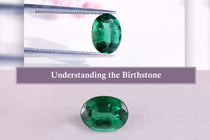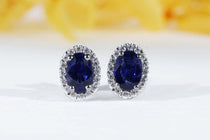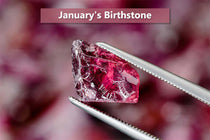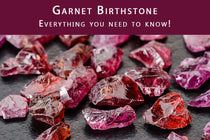Baguette diamonds captivate with their elegance and distinctive geometric cut that resembles a slender loaf of French bread, hence the term "baguette." Characterized by their long, rectangular shape and step-cut facets, these diamonds offer a unique clarity and luster, making them a sought-after choice for those who prefer a vintage yet timeless appeal in their jewelry. As accent stones, baguette diamonds beautifully complement a primary gemstone, adding a touch of sophistication to any setting they grace.
When you're exploring the world of diamonds, understanding the qualities that make baguettes stand out is key. Unlike the brilliant round cut, which is designed to maximize sparkle, the baguette cut emphasizes clean lines and clarity with its 14 facets. This makes inclusions more visible, so selecting a high-quality stone is crucial for achieving the desired clarity. Baguette diamonds are often found adorning the bands of rings or flanking a larger central stone, offering an additional layer of glamour and structure to high-end jewelry pieces.
History of Baguette Diamonds
Baguette diamonds reflect a unique blend of vintage charm and contemporary allure, originating from an era renowned for its bold, geometric designs.
Origins and Art Deco Influence
The baguette diamond first emerged in the 1920s during the Art Deco Movement, a period that celebrated symmetrical and streamlined forms. Art Deco, a term derived from the 1925 Paris Exposition Internationale des Arts Décoratifs et Industriels Modernes, greatly impacted the design of these diamonds. Baguette diamonds are characterized by their long, rectangular shape and step-cut facets which create a mirror-like effect. They were initially designed to complement larger stones and add to the grandeur of Art Deco jewelry pieces with their clean lines and subtle sparkle.
Evolving Popularity in Modern Jewelry
The popularity of baguette diamonds has not waned since the Art Deco era. Their timeless elegance appeals to those who cherish vintage style yet crave the sophistication of modern design. In contemporary jewelry, baguette diamonds are often featured in both engagement rings and everyday jewelry, offering a nod to the past while fitting seamlessly into the sleek aesthetics of today's fashion. Whether set alone in a minimalistic band or framing a larger stone in an intricate setting, these diamonds provide a touch of vintage flair that is perpetually in vogue.
Understanding Baguette Diamonds

Baguette diamonds distinguish themselves through their unique cut, geometric shape, and stunning clarity. As you explore this variety of diamond, pay close attention to their defining characteristics, cut and facet structure, and unparalleled appearance.
Defining Characteristics
A baguette diamond is known for its elongated rectangular shape, featuring a step-cut design which highlights the diamond's clarity. Typically, this diamond will have 14 facets, though the number can vary slightly, giving it a simpler look compared to more intricate cuts. The long, straight lines and minimalistic facets accentuate the rectangular form, providing your jewelry with a timeless elegance.
Cut and Facet Structure
The step cut of a baguette diamond consists of parallel, rectilinear facets that resemble the steps of a staircase. Straight baguettes are cut with perfect rectangular edges, while tapered baguettes have edges that angle inwards, giving a tapered shape that works well to complement other feature stones. This distinct facet structure plays a crucial role in the stone's interaction with light, often resulting in a subtler shine compared to other diamond cuts.
Unique Shape and Appearance
Baguette diamonds, due to their narrow and elongated form—resembling a baguette bread loaf—offer a chic and modern feel. They are commonly used as accents to larger stones because of their geometric shapes that align neatly with various design settings. When set horizontally or vertically, a baguette diamond can create different visual effects, either accentuating the band's length or adding a sophisticated contrast to a centerpiece. Its elongated cushion cut is highly versatile, perfect for bespoke and avant-garde jewelry designs.
Baguette Diamonds in Jewelry
Baguette diamonds are recognized for their elongated rectangular shape and step-cut facets, offering a distinctively modern look while providing a nod to Art Deco elegance. Your appreciation for baguette diamonds will deepen as we explore their incorporation in jewelry, particularly in engagement and wedding rings, as accent stones, and within various settings.
Engagement and Wedding Rings
When you're selecting an engagement ring or wedding band, a baguette diamond ring can be a sophisticated choice. These stones are often set in a channel setting, where they are nestled between two strips of metal. This not only secures the diamonds but also creates a smooth, sleek look that is perfect for everyday wear. For a timeless option, eternity bands with baguette diamonds embrace durability and enduring style.
Accent Stones and Side Stones
Accent stones or side stones in a piece of jewelry can elevate the overall appearance of the center stone. Baguette diamonds serve as exquisite complements to a central diamond, especially in vintage settings. Their linear shape allows for a seamless flow of design when used as side stones, enhancing the brilliance of the main gem without overwhelming it.
Incorporation in Different Settings
The versatility of baguette diamonds is well showcased through various ring settings. In a bezel setting, baguettes provide a contrasting geometry that highlights and protects the center stone. With their clarity and linear structure, they lend themselves well to both contemporary and vintage designs. Each baguette diamond's crisp edge aligns perfectly with others, which is particularly appealing in eternity rings and stylish baguette engagement rings.
Quality and Selection

When you're choosing a baguette diamond, the factors that significantly influence its appeal and value are clarity, color, and carat weight. Understanding these characteristics can ensure you make an informed decision.
Clarity and Inclusions
Baguette diamonds, known for their unique step-cut design, inherently exhibit inclusions and imperfections more visibly than other cuts. While evaluating clarity, look for a stone with the least and smallest inclusions. VS2 clarity grade diamonds offer a balance between quality and value, generally having inclusions that are not visible without magnification.
Color and Grading
Color is another critical attribute. Baguette diamonds are evaluated on a color scale from D (colorless) to Z (light color). A higher color grade signifies less color, thus a diamond closer to colorless. Since baguettes are a step-cut diamond, they reveal color more intensely; therefore, opt for a higher color grade to ensure your diamond appears as clear and bright as possible.
Carat Weight and Proportions
The carat weight of a baguette diamond affects its size and, consequently, its visual impact. Yet, with smaller carat weight baguettes, focus on the stone's proportions and symmetry to maximize its radiance. While emerald-cut diamonds—including the emerald-like baguette—rely on precision and proportion rather than sheer size. Optimal proportions in step-cut diamonds enhance their elegance and reflect light effectively.
Comparisons with Other Diamond Cuts

When selecting a diamond, the cut is a crucial factor in determining its brilliance and character. Here you'll explore how baguette diamonds differ from other popular diamond cuts such as emerald, round, and Asscher.
Emerald Cut vs Baguette Cut
The emerald cut offers a sophisticated, larger-looking table and elongated facets, which create a hall-of-mirrors effect. In contrast, baguette diamonds typically feature 14 facets and have a narrower, more rectangular appearance. They are often used as side stones rather than center pieces due to their simpler cutting style and subtle shine.
Round and Brilliant Cuts
Round cut diamonds are exceedingly popular due to their versatility and the superior sparkle offered by their 58-facet cut, commonly known as the round brilliant cut. The light performance of a round brilliant surpasses that of a baguette cut, which has fewer facets and exhibits more of a lustrous gleam than a dazzling sparkle.
Asscher and Cushion Cuts
Asscher-cut diamonds share a similarity with emerald cuts concerning their stepped facets but display a square shape with a deep pavilion. This structure provides intense reflection, sometimes referred to as the "windmill" pattern. The cushion cut marries the old mine cut with a modern touch, offering a soft square or "pillow" shape and rounded corners that enhance their brilliance. Both cuts demonstrate more fire and sparkle than the straight lines and minimalistic style of baguette cut diamonds.
Styling with Baguette Diamonds

Baguette diamonds offer a unique blend of timeless brilliance and contemporary chic. They provide versatile styling options that can elevate any outfit whether you're aiming for a vintage look or a modern aesthetic.
Vintage and Classic Combinations
When you think of vintage styling, baguette diamonds embody the essence of classical elegance. These stones shine with a sparkle that brings to mind imagery of the French Hall of Mirrors, transporting you to an era of grandeur. To capture this historical charm, consider pairing your baguette diamonds with other vintage elements such as intricate lace or a velvet gown. Time-honored brands like Cartier have effortlessly incorporated baguette diamonds into their classic designs, often seen gracing monochrome ensembles to enhance their sophisticated allure.
Modern and Contemporary Trends
For a modern twist, your baguette diamonds can create dramatic flair when set against contemporary designs. Think sleek lines and high-contrast color palettes that highlight the diamond's brilliance. Whether it's a cuff bracelet with baguette diamonds arrayed amidst diamond monograms or a minimalist ring that channels a chic sparkle, contemporary jewelry settings can turn baguette diamonds into a statement piece that captures attention in any room.
Artful Compositions in Fine Jewelry
Your styling with baguette diamonds becomes a creative journey when you explore artful compositions in fine jewelry. Arranging these diamonds in unconventional patterns or pairing them with colored gemstones can create a unique piece that speaks to your personal narrative or style. Consider the impact of a timeless baguette diamond pendant amongst an ensemble of mixed metal bangles, offering a hint of elegance without compromising on a modern edge. The key here is to thoughtfully compose pieces that resonate with your aesthetic while appreciating the intrinsic beauty of the baguette diamond.
Frequently Asked Questions
Baguette diamonds are known for their unique cut and understated elegance. You might have specific questions about their value and appeal, especially when choosing a piece of jewelry. Here are some direct answers to common queries.
What determines the value of baguette diamonds?
The value of baguette diamonds is determined by the 4 Cs: carat weight, clarity, color, and cut. Because of their shape, the quality of the cut and clarity are particularly important, as imperfections and color are more visible in this elongated diamond.
What makes a baguette diamond ring a popular choice for engagement rings?
A baguette diamond ring is popular for engagement rings due to its sophisticated and modern appearance. The clean lines and simplicity make it a versatile choice that complements both vintage and contemporary settings.
How does the brilliance of baguette diamonds compare to other diamond cuts?
The brilliance of baguette diamonds is subtler compared to round or princess cuts. Their step cuts offer a unique type of shine that emphasizes clarity over sparkle, giving off a lustrous sheen instead of a brilliant scintillation.
What should be considered when choosing a brand for a luxury engagement ring with baguette diamonds?
When choosing a brand for a luxury engagement ring, consider the brand's reputation for quality and craftsmanship. You should also look at their selections of baguette diamonds to ensure they offer the high standard of cut and clarity that this diamond shape deserves.
How does the baguette cut diamond fare against VVS clarity diamonds in terms of quality?
Baguette cut diamonds with VVS (Very Very Slightly Included) clarity are considered high quality due to the minimal inclusions. The elongated cut of baguette diamonds makes inclusions more visible, so VVS clarity is particularly valuable in this shape.
What are the stylistic differences between men's and women's jewelry featuring baguette diamonds?
Men's jewelry featuring baguette diamonds often displays a more bold and angular design, while women's jewelry tends to embrace a more delicate and intricate setting. Both styles, however, capitalize on the elegant, streamlined look of the baguette cut.
Checkout some of our top collections:








